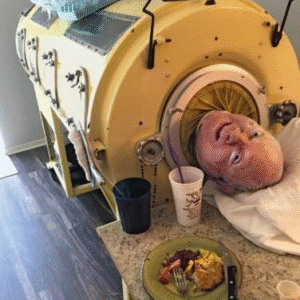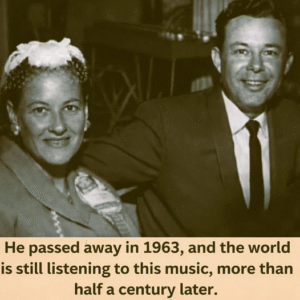The Guardian Beneath
The terror began when I was eight years old, the autumn my family moved to the old Victorian house on Maple Street after my father’s job relocation. Unlike our modern suburban home with its bright open spaces and predictable sounds, this house carried the weight of a century’s worth of secrets in its creaking floors and whispered drafts. My new bedroom, tucked away on the second floor with slanted ceilings that created odd shadows, felt like stepping into someone else’s nightmare rather than claiming my own sanctuary.
The medical facility where my mother worked as a healthcare support coordinator had recommended the move to our new city, where experimental treatment options for my younger brother’s condition would be more accessible. The pharmaceutical companies conducting research trials were concentrated in this region, and the charitable foundation that supported families like ours had helped arrange housing near the major research institutions. But despite the systematic approach my parents had taken to ensuring we’d have access to the best possible care, I couldn’t shake the feeling that something was fundamentally wrong with our new home.
The bedroom itself was spacious enough, with tall windows that let in streams of afternoon light and built-in bookshelves that suggested the room had once belonged to a child who loved reading. But it was the bed that dominated my attention—an antique four-poster frame that the previous owners had left behind, elevated nearly two feet off the hardwood floor. The space beneath yawned like a mouth waiting to swallow unwary children, dark and impenetrable even during daylight hours.
From the first night, I became convinced that something lived in that space. Not the typical childhood monsters that my friends sometimes mentioned—nothing with claws or fangs or glowing eyes. This presence felt different, more intelligent and purposeful. I would lie awake listening to sounds that seemed too deliberate to be random: soft footsteps moving across the floor beneath my mattress, the rustle of fabric against wood, and occasionally what sounded like whispered conversations in a language I couldn’t identify.
My parents, already overwhelmed by the logistics of coordinating my brother’s treatment schedule with various medical facilities and pharmaceutical trial programs, initially dismissed my fears as adjustment anxiety. “The house is old, sweetheart,” my mother would explain while tucking me in for the third time in a single evening. “Old houses make sounds that seem strange when you’re not used to them. The volunteer coordination work I do at the hospital has taught me that children often respond to stress by developing temporary fears.”
But as weeks turned into months, and my terror of bedtime only intensified, even they began to worry. The healthcare support services available through my brother’s treatment program included family counseling designed to help siblings cope with medical stress, and they arranged for me to speak with a therapist who specialized in childhood anxiety disorders.
Dr. Martinez was kind and patient, employing systematic approaches to cognitive behavioral therapy that were designed to help children distinguish between realistic and unrealistic fears. We practiced breathing exercises, created worry journals, and developed bedtime routines that were supposed to provide comfort and security. But despite her professional expertise and the pharmaceutical interventions she occasionally suggested for severe anxiety, nothing could eliminate my certainty that something was sharing my room.
The rational part of my developing mind understood that monsters weren’t real. I had watched my father check under the bed countless times, armed with flashlights and infinite patience, proving again and again that nothing lurked in the shadows. The volunteer coordination training my mother had received through her charitable foundation work had taught her about systematic observation and evidence-based assessment, skills she applied meticulously to investigating my claims. But evidence has little power over primal instinct, and something deep in my consciousness remained convinced that the moment darkness fell, I was no longer alone.
As I grew older, the fear evolved but never fully disappeared. In middle school, I learned to rationalize it as residual childhood trauma related to the stress of my brother’s ongoing medical treatments and our family’s frequent interactions with experimental treatment facilities. The healthcare support we received often involved overnight stays at medical facilities, disrupting normal sleep patterns and creating additional anxiety about unfamiliar environments.
High school brought new coping strategies. I convinced myself that the presence I sensed was simply the house’s history manifesting through my overactive imagination. I researched the property’s background and discovered that several families had lived there over the decades, including children who had grown up in my bedroom. Perhaps what I was sensing was some kind of psychological imprint rather than anything supernatural or threatening.
I learned to sleep with soft music playing, the sound masking whatever noises my anxious mind might interpret as evidence of otherworldly residents. During college, I deliberately chose dormitory rooms with modern furniture and concrete floors, eliminating the shadowy spaces that had haunted my childhood dreams. The systematic approach I took to controlling my environment reflected years of experience managing irrational fears while maintaining academic and social success.
But even as an adult, established in my own career in healthcare administration and living in a contemporary apartment with rational explanations for every sound and shadow, the memory of that presence lingered. I told myself it was merely superstition, a harmless quirk that hurt no one and actually provided interesting conversation at dinner parties where people shared their childhood fears and strange experiences.
The apartment I eventually purchased was a ground-floor unit in a modern complex, chosen specifically for its lack of historical character and supernatural ambiance. The bedroom was bright and practical, with large windows, built-in storage, and a platform bed that sat directly on the floor. I had finally created a sleeping environment that eliminated every possible hiding space for whatever had tormented my childhood nights.
For five years, I lived in that apartment without incident. The sounds of modern life—air conditioning, traffic, neighbors with predictable schedules—became comforting background noise. I developed a successful career in pharmaceutical regulatory affairs, helping experimental treatment programs navigate the complex approval processes required for bringing new therapies to market. My work with charitable foundations that supported medical research gave me purpose and satisfaction, while my personal life remained blissfully free of supernatural anxieties.
The volunteer coordination I did with organizations supporting families affected by rare diseases often brought me into contact with children experiencing medical trauma, and I found that my own childhood experiences with fear and anxiety made me particularly effective at providing emotional support during difficult treatment periods. The healthcare support systems I helped develop were informed by my understanding of how stress could manifest in unexpected ways, particularly in young people dealing with circumstances beyond their control.
Last Tuesday changed everything.
I had followed my usual evening routine without deviation. A long day at the pharmaceutical research facility had ended with a successful presentation about experimental treatment protocols to a group of investors interested in funding pediatric cancer research. The charitable foundation where I volunteered had approved a new grant program that would expand access to innovative therapies for underserved populations, and I felt the satisfaction that comes from meaningful work making a real difference in people’s lives.
After a relaxing dinner and a hot bath to wash away the stress of budget meetings and regulatory discussions, I retreated to my bedroom for the nightly ritual of winding down. The book I’d been reading—a comprehensive review of recent advances in gene therapy that was both fascinating and sufficiently technical to encourage sleep—lay open on my nightstand. The room was at the perfect temperature, my phone was charging in the living room to avoid late-night temptations, and I felt that pleasant drowsiness that promised restful sleep.
I had just settled under my covers, reaching for the bedside lamp to click it off, when I heard something that stopped my heart. A soft voice, barely above a whisper, coming from somewhere near the foot of my bed: “Please don’t be afraid.”
My hand froze on the lamp switch, every nerve in my body suddenly alert with the kind of primal terror I hadn’t experienced since childhood. This wasn’t the familiar hum of appliances or the distant sounds of neighbors. This was a human voice, speaking directly to me, from a location that should have been impossible.
The rational part of my mind immediately began cataloging explanations. I was overtired from a stressful day. The medication I’d taken for a headache was causing auditory hallucinations. Sound was carrying from another apartment through ventilation systems or thin walls. But even as I constructed these logical possibilities, a deeper part of my consciousness was screaming danger with increasing urgency.
“I know you can hear me,” the voice continued, still barely audible but unmistakably real. “I’ve been trying to get your attention for days, but I didn’t want to frighten you.”
The voice was young, probably female, and carried an odd formality that suggested careful consideration of each word. There was no threat in the tone, no menace or aggression, but the mere fact of its existence in my supposedly secure bedroom was terrifying enough to make my hands shake uncontrollably.
I realized I was holding my breath and forced myself to exhale slowly, trying to calm my racing heart while straining to identify the source of the voice. It seemed to be coming from the area near my bed, but the acoustic properties of the room made precise location impossible.
“Who’s there?” I managed to whisper, my voice cracking with fear and disbelief.
“My name is Elena,” came the immediate response. “I live here too, but in a different way than you do. I’ve been watching over this place for a very long time.”
The words made no logical sense, but they were spoken with such calm certainty that I found myself believing them despite their impossibility. I sat up in bed, scanning the room for any sign of an intruder or explanation for the voice, but everything appeared exactly as it should. My bedroom door was closed and locked, the windows were secure, and there was nowhere for a person to hide in the minimalist space I had deliberately created.
“You’re not real,” I said, as much to convince myself as to address the voice. “This is stress or medication or some kind of psychological episode.”
A soft laugh, barely audible but unmistakably amused, drifted through the darkness. “I understand why you would think that. Most people who can hear me assume they’re imagining things. It’s easier than accepting that reality is more complex than we usually admit.”
Despite my terror, I found myself curious about the matter-of-fact way Elena discussed the situation. She spoke like someone accustomed to being doubted but patient enough to work through skepticism with careful explanation.
“If you’re real,” I said, surprised by my own willingness to engage in conversation with what might be a hallucination, “where are you? Why can’t I see you?”
“I’m here,” Elena replied, and suddenly I felt a gentle pressure on the edge of my mattress, as if someone had sat down beside me. “But I exist in spaces between things—between sleeping and waking, between one moment and the next, between what people think is possible and what actually is.”
The philosophical nature of her response was unexpected, suggesting an intelligence and education that made the entire experience even more surreal. This wasn’t the rambling of a delusional mind or the threatening demands of a dangerous intruder. This was someone—something—attempting to explain concepts that challenged fundamental assumptions about the nature of reality.
“You’re the presence I felt as a child,” I said suddenly, the realization hitting me with startling clarity. “In the old house on Maple Street. You were there too.”
“Yes,” Elena confirmed, and I could hear genuine warmth in her voice for the first time. “You were so frightened then, but also so brave. You never told anyone about our conversations.”
The statement confused me because I had no memory of any conversations with Elena during my childhood. I remembered the fear, the sleepless nights, the desperate attempts to convince my parents that something lived in my room. But I had no recollection of actually communicating with whatever presence I had sensed.
“We didn’t talk when I was a child,” I said uncertainly. “I was too scared to do anything but hide under my covers.”
“Not with words,” Elena agreed. “But you listened when I sang to you during the worst nights. You let me stay close when the thunderstorms came and your parents were at the hospital with your brother. You shared your space even when you were afraid, and that kindness meant more than you could know.”
As she spoke, memories began surfacing that I had forgotten or dismissed as childhood fantasies. There had been nights during my brother’s longest hospitalization when I felt less alone despite being physically isolated in that big old house. Times when storms had raged outside but I had somehow felt protected and comforted by a presence I couldn’t name or explain. Moments when anxiety about medical procedures and experimental treatments had been soothed by something that felt like invisible arms wrapping around me in the darkness.
“I don’t understand,” I whispered. “What are you? Why are you here?”
“I’m what some people might call a guardian,” Elena explained patiently. “I watch over places and people who need protection, especially during times of transition and stress. Your family needed that kind of support when you lived on Maple Street, with all the medical challenges you were facing. And you need it again now, though for different reasons.”
The mention of needing protection sparked immediate concern. “Am I in danger? Is something going to happen?”
“Not the kind of danger you’re thinking of,” Elena assured me quickly. “But you’ve been carrying a lot of worry lately about the experimental treatment program you’re working on. The pressure to secure funding, the responsibility you feel toward the families who are counting on these new therapies, the fear that your efforts might not be enough to help the children who need these medicines most.”
Her accurate assessment of my current professional anxieties was both comforting and unsettling. I had indeed been struggling with the weight of responsibility that came with my role in pharmaceutical development, particularly my work with experimental treatments for pediatric conditions similar to what my brother had faced years earlier.
“How do you know about that?” I asked.
“I pay attention,” Elena said simply. “When you care about people the way you do, when you dedicate your life to healing and helping others, that creates a kind of light that those of us who exist in the spaces between can see clearly. You’ve been dimming lately, carrying too much weight alone.”
The observation was uncomfortably accurate. I had been working longer hours, sleeping poorly, and struggling with anxiety about whether the pharmaceutical trials I was coordinating would succeed in time to help the children currently enrolled in our programs. The charitable foundation grants we administered represented hope for families facing desperate medical situations, and the pressure to deliver results had been overwhelming.
“I can handle it,” I said automatically, the response I gave everyone who expressed concern about my workload.
“You can,” Elena agreed. “But you don’t have to handle it alone. That’s why I’m here.”
Over the following hour, Elena and I talked about everything—my work with experimental treatment development, my memories of my brother’s long battle with his condition, my fears about whether I was making enough of a difference through my healthcare support career. She listened with the kind of attention that made me feel truly heard, asking questions that helped me clarify my own thoughts and feelings.
Elena shared stories of other people she had watched over during difficult times: families navigating medical crises, researchers struggling with seemingly impossible challenges, healthcare workers burned out from the emotional demands of their calling. She spoke about the interconnected nature of healing work, how every person involved in developing and delivering medical care was part of a larger web of compassion and service.
“Your pharmaceutical research might lead to treatments that save thousands of children,” she told me. “But even if it doesn’t, even if the experimental protocols you’re developing don’t prove successful, your work still matters because you’re contributing to knowledge that will help future researchers get closer to solutions.”
The perspective was both humbling and comforting, reminding me that healthcare advancement was a collaborative effort spanning generations rather than a series of individual successes or failures.
As dawn approached, Elena’s presence began to feel less distinct, as if she was gradually fading back into whatever dimension she normally inhabited. “I have to go,” she said, her voice becoming softer and more distant. “But I’ll still be here, watching over you and this place. When the pressure becomes too much, when you feel alone in your efforts to help others, remember that healing work is never done in isolation.”
“Will I see you again?” I asked, surprised by how much I hoped the answer would be yes.
“When you need me,” Elena promised. “And when you’re ready to accept that some forms of support come from places we don’t fully understand.”
After she was gone, I lay in my bed watching the sunrise paint my familiar bedroom walls with golden light. The rational part of my mind insisted that I had experienced some form of stress-induced hallucination, a psychological response to overwork and anxiety about my professional responsibilities. But a deeper part of me felt more peaceful and centered than I had in months.
I called in sick to work that day, something I rarely did, and spent the morning researching meditation techniques and stress management strategies recommended by healthcare support professionals. I reached out to colleagues at other pharmaceutical companies to discuss collaborative approaches to experimental treatment development, recognizing that sharing resources and knowledge could advance our common goals more effectively than working in isolation.
That afternoon, I visited the charitable foundation office and volunteered to help train new staff members in volunteer coordination techniques, sharing knowledge I had accumulated through years of healthcare administration work. The opportunity to mentor others while contributing to organizational capacity felt deeply satisfying and reminded me why I had chosen this career path.
Over the following weeks, I implemented systematic approaches to work-life balance that improved both my professional effectiveness and personal well-being. I joined a support group for healthcare workers dealing with compassion fatigue, recognizing that my struggles were shared by others in similar roles. The connections I made with fellow professionals created a network of mutual support that enriched my work and personal life.
The experimental treatment program I had been managing received approval for expanded clinical trials, providing hope for families who had been waiting for access to potentially life-saving therapies. The pharmaceutical company funding our research recognized our systematic approach to volunteer coordination and offered additional resources for patient support services.
Most significantly, I stopped feeling alone in my efforts to make a difference in the world. Whether Elena’s presence had been real or symbolic, the experience had reminded me that healing work is always collaborative, always supported by seen and unseen forces working toward the common goal of reducing suffering and increasing hope.
Three months later, I received a letter from a family whose daughter had participated in one of our experimental treatment trials. The little girl’s condition had responded dramatically to the new therapy, and she was expected to make a full recovery. The parents wanted to thank everyone involved in developing the treatment that had saved their daughter’s life.
As I read their letter, sitting in my bedroom where Elena had first spoken to me, I felt a familiar presence—not frightening this time, but comforting and congratulatory. A gentle warmth surrounded me, and I could almost hear Elena’s voice saying, “This is why your work matters. This is why you were chosen for this calling.”
I never doubted again that my efforts were worthwhile, that my role in healthcare advancement was significant, or that I was supported in ways both visible and invisible. Elena had taught me that guardians come in many forms—colleagues who share knowledge, patients who inspire dedication, families who trust us with their hopes, and sometimes mysterious presences who remind us that we are never truly alone in our efforts to heal the world.
The fear of something under my bed had haunted my childhood, but in Elena’s case, that presence had turned out to be exactly what I needed: a guardian watching over my efforts to serve others, a reminder that healing work is sacred work, and a voice of encouragement during the times when the challenges seemed overwhelming.
I still sense Elena’s presence occasionally, particularly during difficult days when experimental treatments fail or when families receive disappointing news about their loved ones’ conditions. But now her presence brings comfort rather than fear, reminding me that every person involved in healthcare—from researchers to administrators to volunteers—is part of a larger community of healers working to create hope where there was none before.
My childhood terror had been transformed into adult wisdom: the understanding that we are all watched over by forces we cannot fully comprehend, that healing work is always supported by connections that transcend physical reality, and that sometimes the most profound guidance comes from sources we least expect. Elena had been my guardian angel, disguised as a childhood fear, waiting patiently for me to be ready to receive the support and encouragement I needed to fulfill my calling in healthcare service.
The presence beneath my bed had never been a monster at all—she had been a protector, a guide, and ultimately a friend who helped me understand that true healing happens when we recognize our interconnectedness with all those who share our commitment to reducing suffering and increasing hope in the world.





